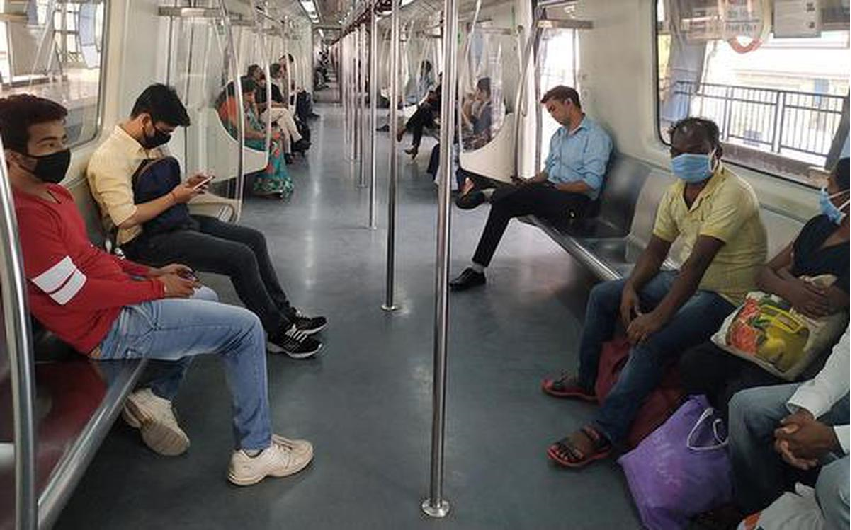
The data shows that, after the change of contingency preventive traffic lights in the different Latin American countries. Which allows people to return to their activities. More than 20% of the population that previously used public transport now do so in one private. However, despite these figures, there are still many people who access this service to get around, and the need to use tools that help enhance security is today more imperative than ever.
Over the past decade, IP video cameras have become an essential part of transportation safety and security. He assures that thanks to the technologies in which they can now be integrated. The range of solutions and their possibilities have also increased “from improving vehicle safety. To optimizing passenger boarding and alighting, or from correcting driver behavior to reduce road maintenance costs. On the other hand, the so-called “new normality” is requiring cities to rethink. The ways of guaranteeing safety in all areas, mainly in mobility.
In the case of many cities, it is extremely important to promote public transport as the best transport alternative. To achieve this, it is essential to offer a safe environment for both passengers and staff, the Axis specialist, ensures that these factors are the first link in a security strategy to ensure a more reliable environment for users and passengers:
Traffic Management

One of the main sectors that demand a renewed paradigm is the management of roads such as streets and avenues. In addition to transportation routes such as highways, bridges, highways, etc. Without neglecting the organization of public and private parking lots. Smart mobility management is more than ever a strategy that governments must implement in synergy with the private sector, with the aim of reducing the impacts of confinement and preparing for future demands. The Axis Communications expert assures that this intelligent mobility model is based on street monitoring through network video and audio solutions, which together with intelligent analysis allow offering live data on roads,
- The reduction of the flow of cars on the avenues.
- Decrease in transfer times.
- Minimize impacts on the environment.
- Mitigate contagion risks due to crowds on the main avenues.
- Control access to public or private parking lots without physical contact.
Perimeter Protection At Stations And Terminals
Detecting and confirming the presence of possible intruders at the perimeter of spaces such as airports, bus stations, or truck stops in real-time from virtually any location is of the utmost importance. According to Vega, the protection of these sites is critical. Because if there is a risky situation, the provision of the service may be limited. Perimeter protection is based on two pillars: design and protection. The expert points out that the risks of intrusion must be limited through the implementation of adequate solutions. Such as physical systems together with guard patrols and, potentially. The additional use of electronic surveillance systems, which can range from network cameras to intelligent audio and video analytics software.
A Smarter Incident Management System
When it comes to safety in public transport, the cities of South America are at a midpoint in relation to the cities of the rest of the world, so it is important that local governments design and execute strategic mobility plans that contemplate the use of technologies so that the well-being of people continues to be the main objective. This will have a favorable impact on regional economic development, urban planning, the purchasing power of families, as well as on the health and safety of users.
Early detection of potential security risks such as trespassing, loitering, assault, stray objects, and smoke is helping traffic authorities around the world intervene and mitigate incidents before they endanger lives. In the event of an incident, the high-quality images and smart search capabilities built into the video cameras allow authorities to quickly identify suspects and resolve investigations. Two-way audio and emergency boxes, installed on train platforms or remote bus stops, can also be included in the incident management strategy. On the other hand, body cameras can be of great help as they are ideal for minimizing risks and encouraging good behavior on the part of people.
Prevention Of Health Risks
The new social dynamics demanded that the governments of countries like Colombia implement Biosafety measures in public transport. Among the regulations that transport companies must follow to guarantee the safety of Colombians and Peruvians, are cleaning and disinfecting the places where users, and workers. Other people can or have come into direct contact with means of public transport. Such as lockers, waiting for seats, windows, and handrails. Among others, without neglecting the use of masks and the regulation of passenger access and descent.
Network surveillance has been of great help in mitigating these risks. Providing valuable information on those who comply with health regulations. This aspect is very important, since today, no sector, no matter how small it may seem. Should ignore the fact that the new rules of coexistence are a starting point for security strategies and continuity of operations. Network audio, intelligent analysis, body cameras, and access controls form a synergy capable of helping the person in charge to guarantee compliance with regulations and improve security in transport.
Public transport is one of the most demanded services in Latin America. One of those that most need a new security approach. Based on the needs of the population. Which takes into account not only the use of the service but also the security needs of all the scopes. It is necessary to rethink the importance of keeping transport safe. In order to prevent infections, and accidents, be resilient and improve the quality of mobility in this way.
You may also be interested in Seven Ideas To End The Harassment Of Women In Public Transport
